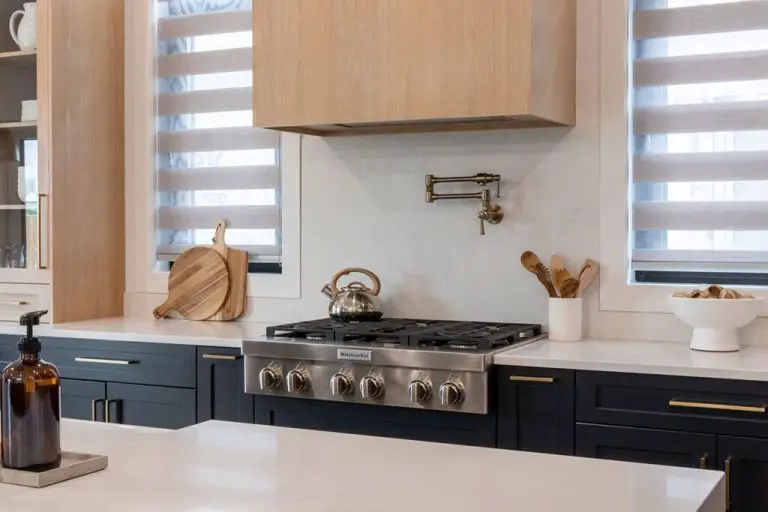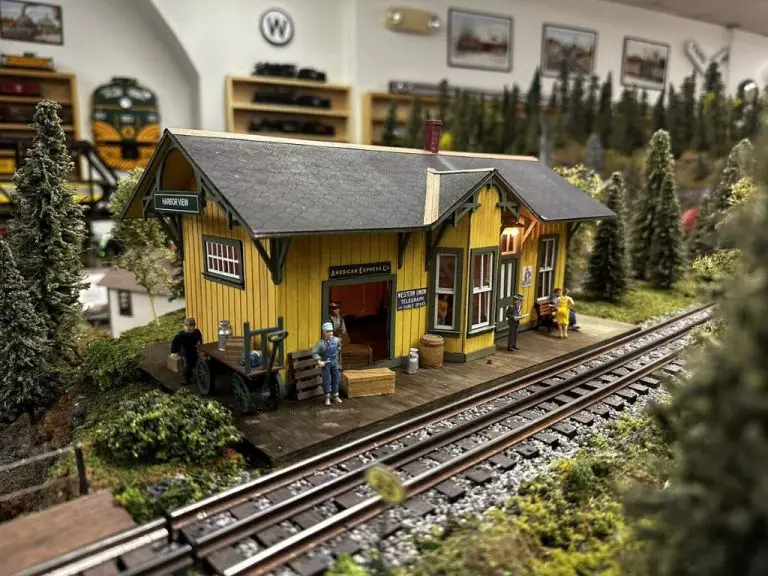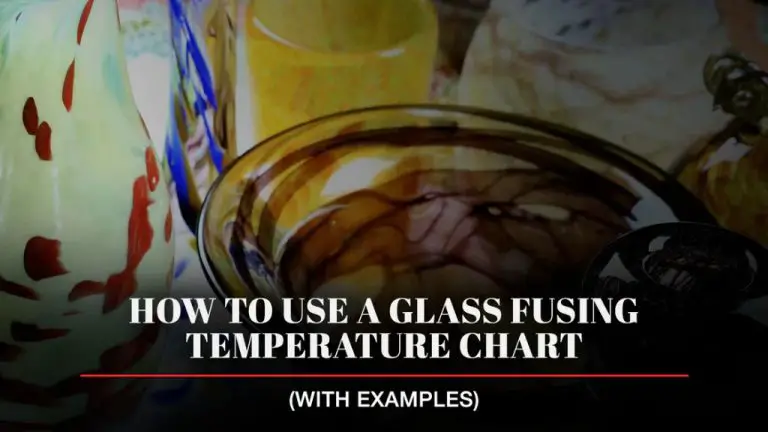Do You Need Kiln Wash For A Microwave Kiln?
What is a Microwave Kiln?
A microwave kiln is a specialized device designed for fusing and slumping glass using a standard household microwave oven as the heat source. It consists of a firing chamber lined with insulation and a lid made of a microwave susceptible material like silicon carbide (1). When placed in a microwave, the lid absorbs the microwave energy and converts it into heat, allowing the kiln to quickly reach glass fusing temperatures of around 1500°F.
Microwave kilns heat glass using microwave energy, rather than conventional methods like electrical elements or gas burners. The microwave radiation causes the molecules in the kiln lid to vibrate rapidly, creating internal friction and heat. This heat is then transferred to the glass inside the chamber (2).
Compared to traditional kilns, microwave kilns offer several key advantages:
- Much faster heat up and cool down times, allowing projects to be completed in minutes rather than hours.
- Lower energy use since microwaves directly heat the glass.
- Smaller size takes up less space.
- Lower cost than most standard kilns.
With their speed and convenience, microwave kilns allow glass artists to fuse and slump projects in their home studio quickly and easily.
(1) https://www.glacialartglass.com/blogs/tips-and-tutorials/blog-everything-you-need-to-know-before-buying-a-microwave-kiln
(2) https://www.soulceramics.com/pages/microwave-kiln-things-to-consider
What is Kiln Wash?
Kiln wash is a refractory coating that is brushed onto kiln shelves, posts, and other kiln furniture to prevent glazes and ceramics from sticking during firing. It creates a protective barrier between the kiln shelf and the pottery pieces.
The main purpose of kiln wash is to prevent glaze dripping and kiln shelf scarring. When fired, some glazes can become molten and drip onto kiln shelves. This can fuse the shelves and pottery together, potentially ruining both. Kiln wash prevents this by providing a protective coating.
There are two main types of kiln wash:
- Liquid kiln wash – A premixed liquid solution made from alumina, silica, and other refractory materials suspended in water. It is ready to brush on out of the container.
- Powdered kiln wash – A dry powder mixture composed of refractory materials like alumina, silica, zirconia, and clays. It needs to be mixed with water before application.
Both types are made of heat resistant compounds and provide the same protective barrier for kiln shelves. Powdered mixes allow you to control the thickness of the wash.
Do You Need Kiln Wash for a Microwave Kiln?
Kiln wash serves an important purpose in microwave kilns, just as it does in traditional kilns. However, there are some key differences to consider when using kiln wash in a microwave kiln.
The main purpose of kiln wash is to provide a protective coating that prevents glass from fusing to the kiln shelf or floor. This allows projects to be removed easily after firing without damaging the kiln or the glasswork. In traditional kilns, kiln wash also helps minimize dust and debris from affecting the glass surface.
In a microwave kiln, the kiln wash coating is equally important to prevent glass from fusing permanently to the kiln floor. However, microwave kilns do not get as hot as traditional kilns, so the kiln wash may not sinter in the same way. The smoother surface helps keep glasswork from sticking.
Microwave kiln manufacturers provide specific recommendations on applying kiln wash. It’s important to follow their instructions closely. Most recommend mixing the kiln wash into a thin liquid and applying a very thin, even coat to the shelf or floor [1]. Too thick of a coat can lead to cracking or peeling. The coating should be reapplied after every few firings to maintain its effectiveness.
So in summary, yes kiln wash is an essential component for success when using a microwave kiln. But special care should be taken to apply it according to the manufacturer’s specifications.
Applying Kiln Wash in a Microwave Kiln
Kiln wash is a refractory coating that helps protect the shelf and floor of your microwave kiln during the firing process. It’s an important step that should not be skipped when using a microwave kiln for glass fusing or other projects.
To apply kiln wash in a microwave kiln:
- Mix the kiln wash according to the manufacturer’s instructions. It usually requires mixing powdered kiln wash with water to create a thin, yogurt-like consistency.
- Use a soft brush to apply a thin, even layer of kiln wash to the shelf and floor of the kiln. Apply in smooth strokes, avoiding any drips or clumps.
- Let the kiln wash dry completely before firing the kiln, usually at least 24 hours.
When applying kiln wash, be sure to work in a well-ventilated area and wear a respirator mask to avoid inhaling the dust. Work carefully to avoid getting kiln wash on your skin or clothing. It can be difficult to remove once dried.
Kiln wash typically needs to be reapplied every 4-6 firings to maintain its protective qualities. Look for cracks, chips, and thin spots in the wash and reapply as needed. A thin, even layer is ideal for proper insulation and prevention of glass sticking.
Always check the shelf and floor coating before each firing. Firing without kiln wash can lead to damage of the kiln shelf and floor. Properly applying and maintaining kiln wash is crucial for safe microwave kiln use.
Kiln Wash Alternatives
While kiln wash is commonly used in microwave kilns, there are some alternative options to consider:
Shelf Paper
One popular alternative is reusable kiln shelf paper. This is a heat-resistant paper that can provide a protective layer in the kiln. The benefits are that it is relatively inexpensive and easy to replace between firings. The potential downside is that it may not last as many firings as kiln wash. Shelf paper needs to be replaced periodically.
Fiber Paper
Some glass artists use layers of fiber paper or newsprint as an alternative barrier. This can work well and is very inexpensive. However, it may burn away more quickly than other options and need frequent replacing. Testing how many firings fiber paper will last is recommended.
Sand/Grog
Mixing grog or sand with a binder like flour paste or gum can create a reusable kiln wash alternative. This provides good insulation and protection. However, it may be more labor intensive to create compared to buying pre-made options. The mixture also needs occasional reapplication after multiple firings.
There are pros and cons to the various kiln wash alternatives. Many glass artists find success using a combination of options like shelf paper and grog mix for cost savings and convenience.
Tips for Using Kiln Wash
Proper application of kiln wash is crucial for optimal performance. Here are some tips on technique:
- Always follow the manufacturer’s instructions for mixing and applying kiln wash. Using too little or too much can cause issues.
- Apply kiln wash in a thin, even layer using a soft brush. Clumps or thick areas can lead to kiln wash flaking off.
- Allow kiln wash to fully dry before firing your kiln, usually 24 hours. Firing wet kiln wash causes cracking.
- Apply 1-2 coats maximum. Too many layers can cause kiln wash to bubble and peel.
- Reapply kiln wash after every 4-5 firings as it wears down over time.
Here are some common kiln wash issues and troubleshooting tips:
- Flaking – Caused by firing too soon, uneven application, or too many coats. Scrape off flakes and reapply a thin layer.
- Cracking – Usually from firing wet kiln wash. Allow full drying time before firing.
- Peeling – Can occur if too many coats applied. Scrape off peeling wash and reapply a thin layer.
- Bubbling – Typically from firing too soon before full drying. Scrape off bubbles and reapply.
- Wearing thin – Normal after repeated firings. Reapply another thin layer.
Properly preparing kiln shelves with a thin, even layer of kiln wash will prevent many common issues.
Maintaining Your Microwave Kiln
Proper care and maintenance is important for getting the most out of your microwave kiln. Here are some tips for keeping it in good working order:
Cleaning – After each firing, allow the kiln to completely cool before cleaning. Use a damp cloth to wipe down the interior walls and floor. Avoid using any harsh chemicals or abrasives. Over time, buildup can accumulate so occasionally do a deeper clean by scrubbing with a baking soda paste.
Kiln Shelves – Check shelves regularly for cracks or warping. Uneven shelves can prevent even heating. Replace shelves about every 2 years or as needed. Choose shelves specifically made for microwave kilns, which are designed to withstand high temperatures.
Test Firing – Perform test firings on a regular basis to ensure your kiln is heating evenly. Use pyrometric cones to verify it reaches the expected temperatures.
Ventilation – Make sure ventilation holes or slits remain unblocked. Proper airflow is important for preventing overheating.
By properly caring for your microwave kiln, you can keep it functioning optimally for many years of fusing, slumping, and small projects.
Microwave Kiln Safety
Working with any type of kiln requires proper safety precautions. Microwave kilns present some unique potential hazards that users should be aware of.
The extremely high temperatures reached inside a microwave kiln can cause severe burns if safety procedures are not followed. According to this source, you should never touch any part of a microwave kiln with bare hands unless you know it is completely cool. The lid in particular can become extremely hot.
Microwave kilns utilize high-powered microwave radiation to generate heat. Exposure to microwaves can be dangerous, so microwave kilns must be operated properly and safely. Never run a microwave kiln with the door open or with any gaps or holes in the housing.
It’s also crucial to place the kiln on a sturdy, fireproof surface away from any flammable materials. Have a fire extinguisher nearby and do not leave the kiln unattended while in operation. Proper ventilation is also important.
Be sure to read and follow all safety instructions provided by the manufacturer. With proper precautions, microwave kilns allow artists and hobbyists to fuse and fire materials safely.
Choosing a Microwave Kiln
When choosing a microwave kiln, there are a few key features to look for:
Interior size – Look for a kiln with an interior that can comfortably fit the size of pieces you want to fire. Larger kilns like the Hensom Large Microwave Kiln offer more flexibility.
Power – Make sure the kiln is rated for your microwave’s wattage to ensure proper functioning. Most standard models can handle 600-1200W.
Safety features – Choose a kiln with safety vent holes, secure door latches, and handles that stay cool during firing. The Paragon QT-1 is designed with multiple safety features.
Ease of use – Look for kilns with smooth, glazed interiors that are easy to clean. The Amaco Brent features a spill-proof floor and removable thermocouple.
Top brands – Paragon, Amaco Brent, and Skutt are leading manufacturers of quality microwave kilns to consider.
Read reviews and product details to find the right microwave kiln for your needs, space, and budget.
Frequently Asked Questions
Microwave kilns are a popular choice for hobbyists and artists looking to fuse, slump, or fire small projects. Here are answers to some of the most frequently asked questions about microwave kilns:
What can you fire in a microwave kiln? Microwave kilns are ideal for firing small pieces of glass, precious metal clay, and some ceramics like bisqueware. The fast heat-up time makes them well-suited for fusing and slumping glass. However, they generally don’t get hot enough for higher-temperature ceramics firing.
How hot does a microwave kiln get? Most standard microwave kilns reach maximum temperatures between 1400-2200°F. This high enough for glass fusing, slumping, annealing, and also firing silver or copper metal clay. For higher-temperature firings like porcelain or stoneware, a dedicated ceramic kiln is recommended.
Do you need kiln wash? Applying kiln wash is highly recommended with microwave kilns to prevent glass and projects from sticking to the floor. Kiln wash also helps protect the shelf from damage. See our tips on properly applying kiln wash.
How long does it take to fire glass? One of the benefits of microwave kilns is very fast firing times, usually 5-20 minutes depending on the project. The fast heat-up helps prevent devitrification. Fuse glass projects in 10 minutes or less.
Is a microwave kiln safe? Modern microwave kilns are designed with safety in mind, including door locks, thermal insulation, and temperature controls. Be sure to read all safety instructions and never leave a firing unattended. Proper microwave kiln maintenance is also key.
What size microwave kiln should I get? Consider what types of projects you’ll be making. Smaller hobby kilns (~10″x6″) work for jewelry, while larger kilns (~14″x14″) allow small plates and bowls. See our kiln size guide to help choose the right size for your needs.
How much electricity does a microwave kiln use? Microwave kilns use standard 120V household current. Small hobby kilns pull around 1000 watts on average. This is less energy than a standard microwave oven.
Where should I put my microwave kiln? Microwave kilns require ventilation, so avoid enclosed spaces like cabinets. Place on a sturdy surface in a garage, studio, or kitchen area with good airflow. Keep away from flammables.
Do I need special tools or PPE? Safety glasses, heat-resistant gloves, and a kiln vent are recommended. Glass cutting tools, kiln posts, fiber blanket, and other glass fusing tools are useful. Always read safety guidelines.
Hopefully these tips help answer some of the most common questions about microwave kilns. Let us know if you have any other kiln questions!






